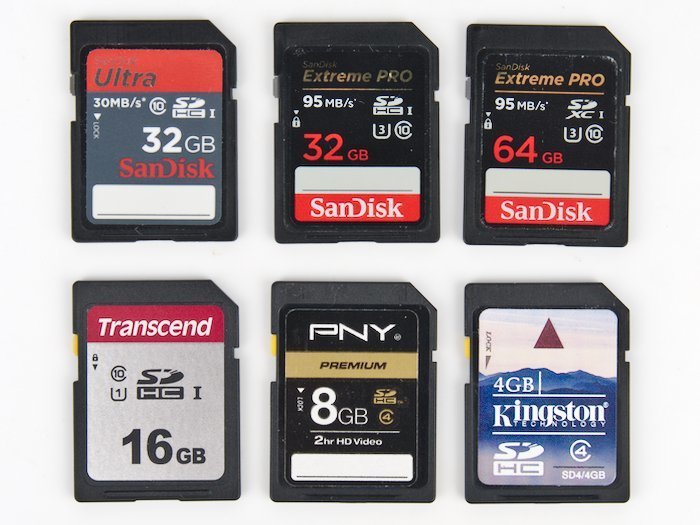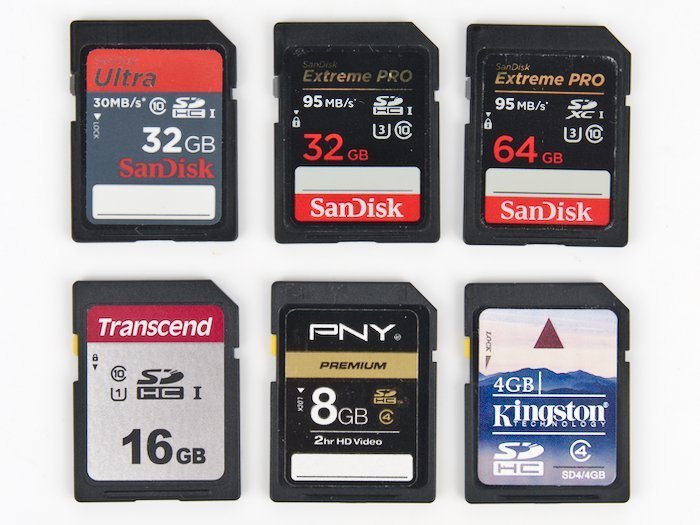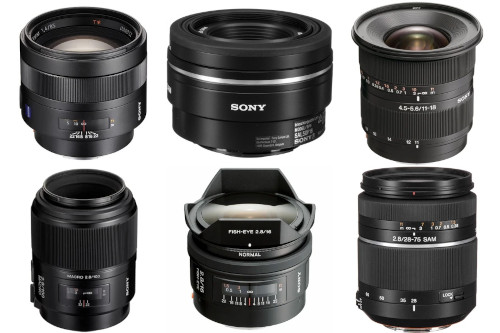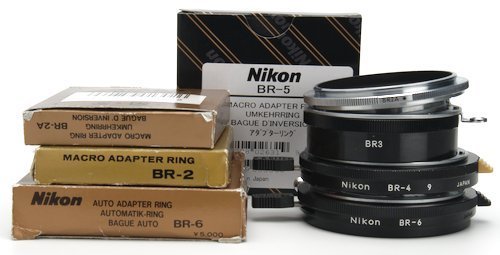
Nikon BR Bellows & Macro Accessories
- Nathaniel Stephan
- Nikon f mount , Nikon bellows
- April 21, 2019
Table of Contents
Nikon BR accessories are designed to be used on a Nikon F-mount bellows or for macro photography. They can be used to reverse a lens, control aperture diaphragms, and attach filters to reversed lenses. They are:
Camera bellows that will work well with the BR accessories are the Nikon PB-4 and Nikon PB-6.
WARNING: The BR-2 and BR-4 will cause damage to camera mounts and lens CPU contacts. The BR-2A and BR-6 do not cause damage.
Quick Note: Lenses with electronically-controlled apertures cannot be reversed. A lens must have a aperture ring that physically controls the diaphragm.
Nikon G series, Canon EOS, Sony E-mount, and Fuji X-mount lenses will not work. Film era lenses are good choices. Also, the focal length should be 50mm or wider. Telephoto lenses will not work.
Nikon BR-2A & BR-2 - Macro Reversing Rings
The BR-2 and BR-2a are reversing rings with a male Nikon F-mount bayonet on one side and male 52mm threads on the other.
They are designed to allow the front filter threads of a lens to screw onto a camera or bellows. Most lenses will perform better at magnifications above 1x when they are reversed.
Any lens with 52mm front filter threads can be attached to the adapter. The adapters can be mounted to a camera, extension tubes, or bellows. There is also an earlier version marked “BR 2 F Nikkor Japan”.

Both rings are made from nickel-plated brass. These are of higher quality than cheap aluminum third party options.
Other manufacturers made reversing rings in the film era. Unfortunately, it is difficult and expensive to find Canon FD, Minolta SR, and Olympus OM reversing rings.
Unlike F-mount lenses, the rings can be mounted in 3 different orientations. There are dots on the outside edge of the rings indicating where it should line up with the female mount.
Changing the mounting point will rotate the attached lens 120 degrees. This is useful if when a lens is mounted, the aperture ring is facing down.
Prevent Damage
A camera can be damaged by using a Nikon BR-2. The adapter can rub against the CPU contract in the mount, it has a tighter fit, and may not mount correctly. The BR-2A is the replacement and will not damage equipment. The differences are:
- Stop screws have different sizes, offset, and screw drives. (Slot drive vs JIS B 1012)
- The BR-2 has slightly wider bayonets with square edges. The BR-2A has been machined to have rounded edges.
- The BR-2A sits further away from the mount, but neither appear to rub against the meter coupling ridge.
- Dots on the outer edge have different positions and the pin lock channels are slightly different.
- The engraved Japan is smaller on the BR-2A.
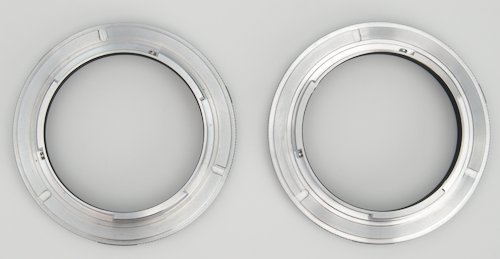
If you don’t intend to use the adapter directly on a camera, the BR-2 is less expensive. Another option is to use the ring with an adapter to another camera system.
BR-3 – Filter Ring & Lens Hood
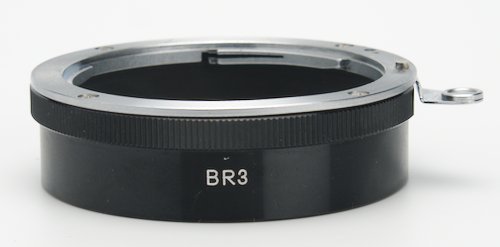
The Nikon BR-3 adapter functions as a lens hood and has 52mm filter threads. It can be mounted to the rear of a lens or the BR-4. I like using it for protection and to prevent flare.
At 17mm long it is big enough to prevent a piece of equipment from accidentally hitting the rear element. They can be found used on eBay for less than $15. A cheaper option is to cut the back off of a lens cap.
There’s a hole on the side for the locking pin release. Light will get through when it is attached to a reverse mounted lens.
If you want to use filters, be prepared to use gaff tape or something else to block the light leak.
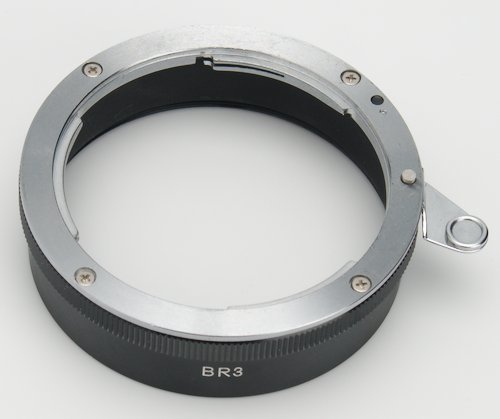
Nikon BR-4 & BR-6 Rings – Auto Diaphragm
The Nikon BR-4 and BR-6 diaphragm rings provide ways to control lens apertures and attach filters to reverse mounted lenses. Both of them leak light.
Combined with a cable release, the Nikon BR-6 or BR-4, will provide automatic aperture control. Both adapters are spring-loaded to keep the aperture diaphragm open.
When the cable release is triggered or locked, the diaphragm will be closed down. The lever on the side of the adapters will also control the diaphragm and can be locked into place.
Light is able to get through gaps in the ring where the lever is located.
| Nikon Cable Release | Fitting |
|---|---|
| AR-4 | Nikon Thread |
| AR-7 | ISO Thread |
| AR-10 | MD Thread |
Nikon BR-4 Ring Reversed Lens Aperture Opening Adapter
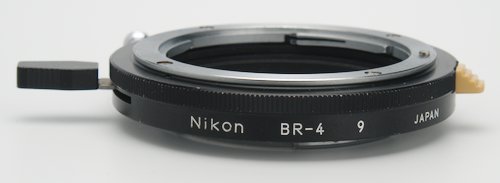
Mounting a Nikon BR-4 onto a camera with an Ai meter coupling ridge will cause damage. The flange on the adapter has the same dimensions as non-Ai lenses.
It also cannot be used on any lens that has CPU pins. Damage will occur if the force is used to try to get the adapter onto a lens.
The BR-6 has a notch to avoid hitting lens CPU pins.
The BR-4 has a male and female F-mount bayonet. A BR-3 is needed to use filters on reverse mounted lenses.
Unlike the BR-6, It can be used with forward-mounted lenses on a bellows or extension tubes. This may be helpful for use with any of the Micro-Nikkor lenses, such as a Micro Nikkor 55mm f/3.5.
None of the Nikon bellows lenses have auto apertures. The Novoflex Auto Bellows Noflexar 105mm f/4, is the only other lens where the setup might make sense.
Nikon BR-6 Auto Diaphragm Ring
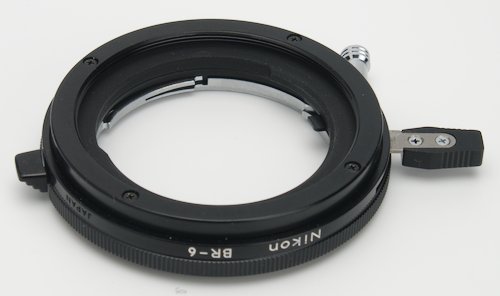
The Nikon BR-6 has a female F-mount and 52mm threads. A notch gives clearance for lenses with CPU contacts.
G series and other lenses with electronically controlled aperture diaphragms will not work with the adapter.
Lens compatibility will be limited to Nikon D-Series and older manual focus lenses, along with some third party lenses.
Working Distance & Reflections
| Adapter | Width |
|---|---|
| BR-6 | 13mm |
| BR-4 | 13.4mm |
| BR-3 | 16mm |
| BR-4 + BR-3 | 25mm |
Also, keep in mind potential problems with reflections.
The Nikon BR-6 has a black finish. The flat face of the BR-6 is large enough to hold a flag stuck on with double-sided tape.
Alone or combined the BR-3 and BR-4 leave several areas of nickel exposed. That could cause unwanted reflections.
Nikon BR-5 – 52mm to 62mm Step Down Ring
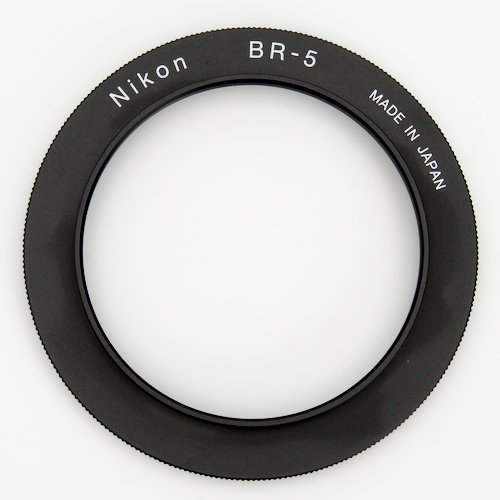
Step-down rings have opposite gender threading as step-up rings.
The Nikon BR-5 is just a well made step down ring. I believe it is made of aluminum and isn’t worth the $20 price tag.
This is an important difference if you want to attach lenses with filter threads that are larger than 52mm to a BR-2 or BR-2A.
Lenses with 49mm, 55mm, and 58mm filter thread sizes are more common than 62mm.
Large sets of step-up/down rings for sale can require multiple rings to get to 52mm. The cheapest and easiest way is to buy specific rings that make the step straight to 52mm.
BR-1 – Nikon S-Mount Macro Adapter
The Nikon BR-1 is an adapter designed to be used with the Nikkor-Q 13.5cm f/4 short mount bellows lens on a Nikon Model 2 bellows.
They are expensive and hard to find. Unless you’re a collector, it doesn’t have a practical use.
